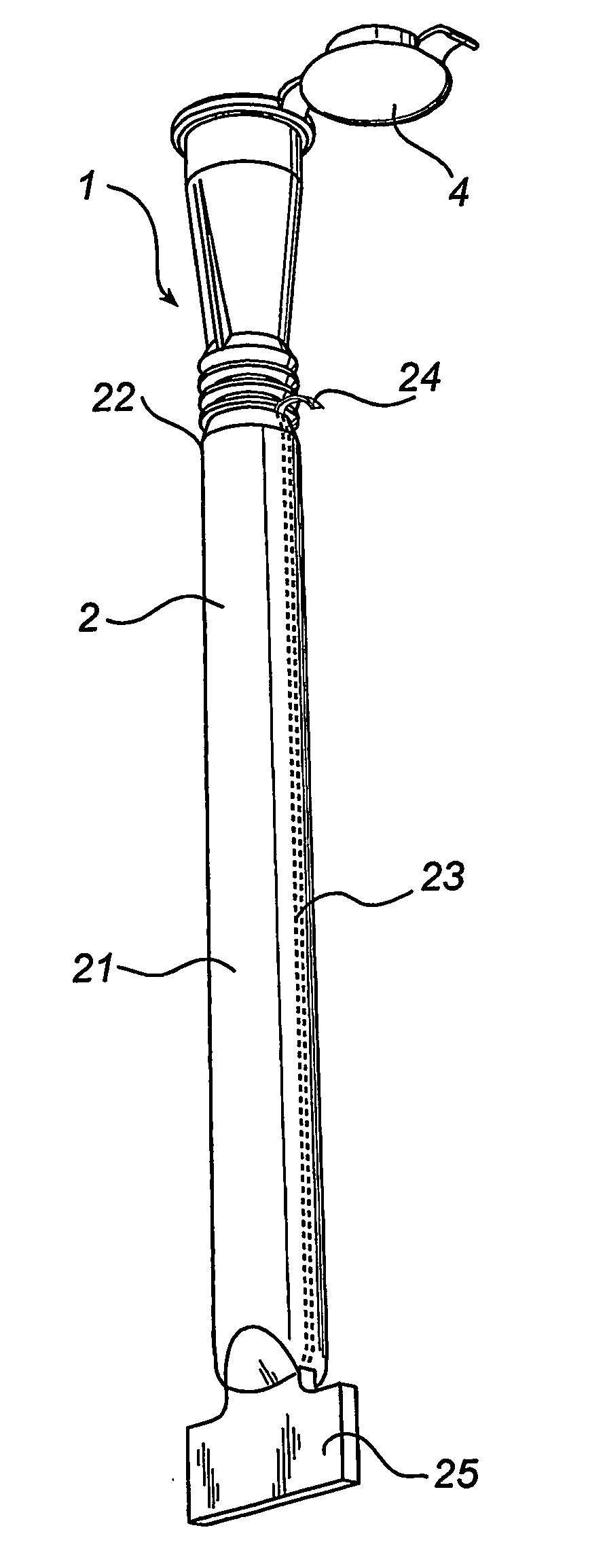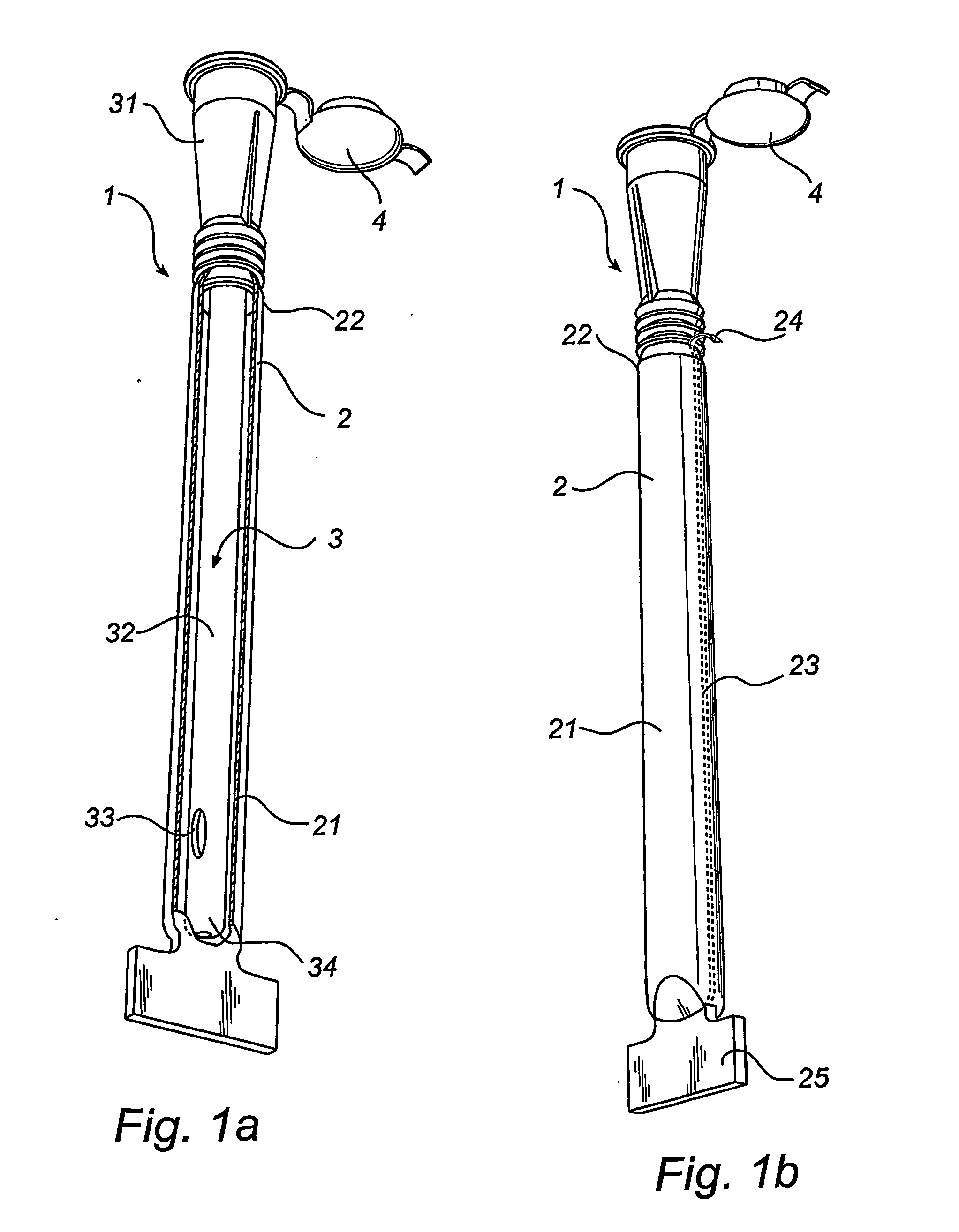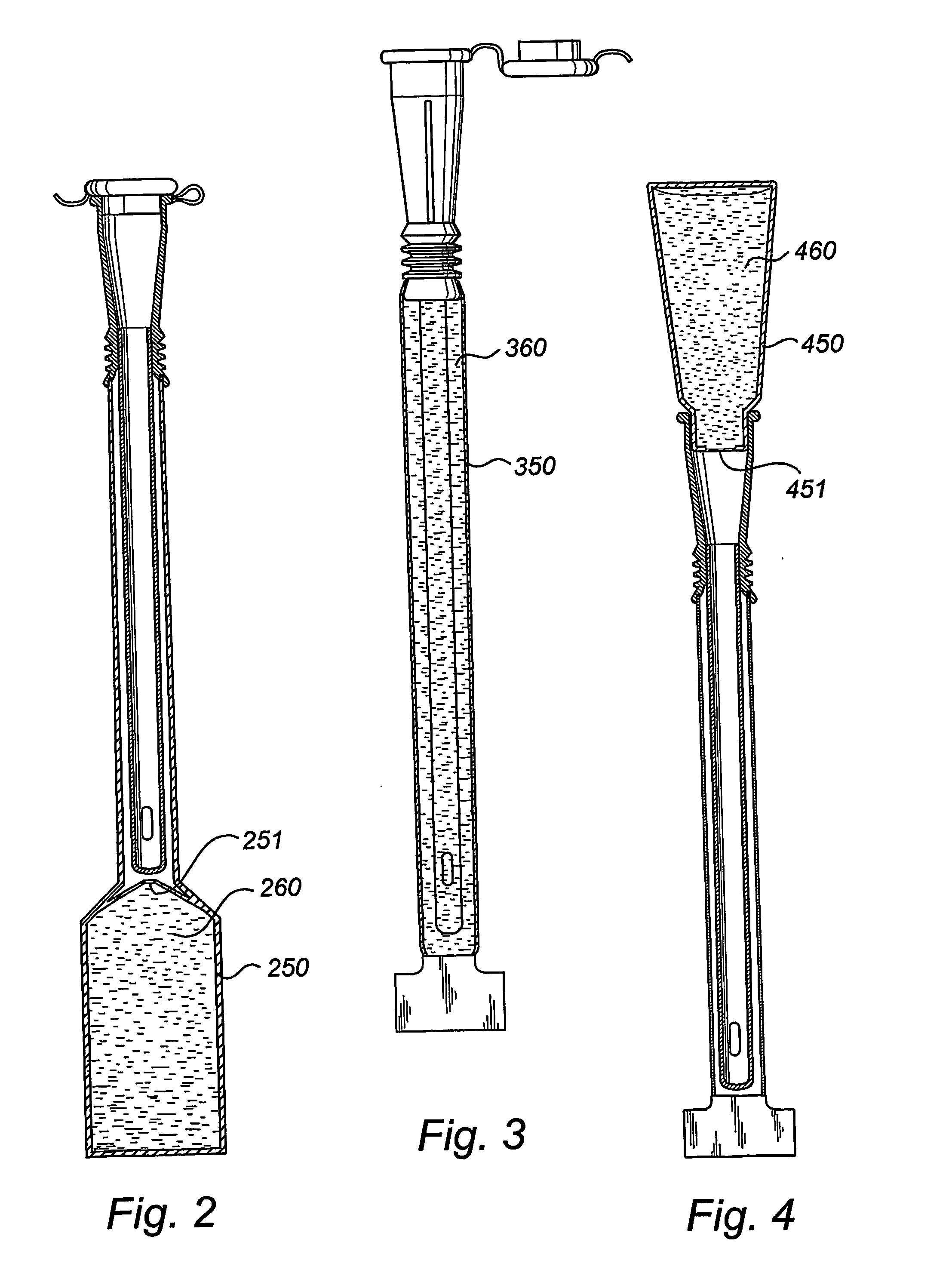Catheter assembly
a catheter and assembly technology, applied in the field of catheter assembly, can solve the problems of difficult and expensive storage, transportation and handling, assembly expensive and harmful to the environment, and the above-described problem of bulkiness, etc., and achieve the effect of low friction surface character, effective rupture control, and cost effectiv
- Summary
- Abstract
- Description
- Claims
- Application Information
AI Technical Summary
Benefits of technology
Problems solved by technology
Method used
Image
Examples
first embodiment
[0055] Referring first to FIG. 1, a catheter assembly 1 according to the invention comprises a wetting receptacle or bag 2, preferably of a transparent flexible plastics material. The receptacle 2 has a downwardly extending elongate pocket 21 at the forward end and an opening end 22.
[0056] The catheter assembly 1 further comprises a catheter, and preferably a hydrophilic urinary catheter 3, having a preferably flared rearward portion 31, an elongate shaft or tube 32 projecting forwardly from the rearward portion 31 and an open-ended lumen (not shown) which extends from the rear end of the rearward portion 31 to a drainage aperture 33 in the rounded tip 34. The rearward portion 31 could function as a connector of the catheter 3, being connectable to other devices, such as a urine collection bag, a drainage tube or the like. At least a part of the elongate tube 32 forms an insertable length to be inserted through a body opening of the user, such as the urethra in case of a urinary cat...
fifth embodiment
[0076] With reference to FIG. 5, the catheter assembly will now be discussed. In this embodiment, the catheter assembly 510 comprises a wetting receptacle or bag 520, preferably of a transparent flexible plastics material. The receptacle 520 has a downwardly extending elongate pocket 521 at the forward end and an opening end 522 (see FIG. 5b).
[0077] As in the previously discussed embodiments, the catheter assembly 510 further comprises a catheter, and preferably a hydrophilic urinary catheter 530. However, in this case a different type of connector 531 is used, with a different type of connection interface for connection to other devices, such as a urine collection bag a drainage tube or the like.
[0078] The catheter receptacle 520 is adapted for accommodation of the catheter tube in the elongate pocket 521, and the opening of the opening end 522 is connected to and closed by the connector or rearward end 531 of the catheter. Hereby, the receptacle encloses at least the insertable l...
sixth embodiment
[0087] With reference to FIG. 6, the catheter assembly will now be discussed. In this embodiment, the catheter assembly 610 comprises a wetting receptacle or bag 620, preferably of a transparent flexible plastics material. The receptacle 620 has a downwardly extending elongate pocket 621 at the forward end and an opening part 622 with an opening.
[0088] As in the previously discussed embodiments, the catheter assembly further comprises a catheter, and preferably a hydrophilic urinary catheter 630, with a connection interface for connection to other devices, such as a urine collection bag a drainage tube or the like. The catheter receptacle 620 is adapted for accommodation of the catheter tube in the elongate pocket 621, and the opening of the opening part 622 is connected to and closed by the connector 631 or rearward end of the catheter. Hereby, the receptacle encloses at least the insertable length of the catheter, but leaves at least part of the catheter outside the receptacle, sa...
PUM
| Property | Measurement | Unit |
|---|---|---|
| hydrophilic | aaaaa | aaaaa |
| friction | aaaaa | aaaaa |
| wetting | aaaaa | aaaaa |
Abstract
Description
Claims
Application Information
 Login to View More
Login to View More - R&D
- Intellectual Property
- Life Sciences
- Materials
- Tech Scout
- Unparalleled Data Quality
- Higher Quality Content
- 60% Fewer Hallucinations
Browse by: Latest US Patents, China's latest patents, Technical Efficacy Thesaurus, Application Domain, Technology Topic, Popular Technical Reports.
© 2025 PatSnap. All rights reserved.Legal|Privacy policy|Modern Slavery Act Transparency Statement|Sitemap|About US| Contact US: help@patsnap.com



